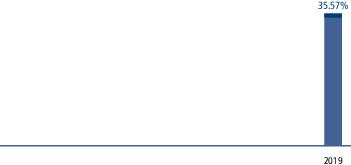Form 497K GOLDMAN SACHS TRUST
Summary
Prospectus
December 29, 2020
Goldman Sachs Strategic Growth Fund
Class P:
GSPPX
Before you invest, you may want to review the Goldman Sachs
Strategic Growth Fund (the “Fund”) Prospectus, which contains more information about the Fund and its risks. You can find the Fund’s Prospectus, reports to shareholders and other information about the Fund online at https://www.gsam.com/content/gsam/us/en/advisors/fund-center/summary-prospectuses.html. You can also get this information at no cost by calling 800-621-2550 or by sending an e-mail request to
[email protected]. The Fund’s Prospectus and Statement of Additional Information (“SAI”), both dated December 29, 2020, are incorporated by reference into this Summary Prospectus.
It is our intention that beginning on January 1, 2021, paper
copies of the Fund's annual and semi-annual shareholder reports will not be sent by mail, unless you specifically request paper copies of the reports from the Fund or from your financial intermediary. Instead, the reports will be made available on a
website, and you will be notified by mail each time a report is posted and provided with a website link to access the report.
If you already elected to receive shareholder reports
electronically, you will not be affected by this change and you need not take any action. At any time, you may elect to receive reports and certain communications from the Fund electronically by calling the applicable toll-free number below or by
contacting your financial intermediary.
You may elect to
receive all future shareholder reports in paper free of charge. If you hold shares of the Fund directly with the Fund's transfer agent, you can inform the transfer agent that you wish to receive paper copies of reports by calling toll-free
800-621-2550. If you hold shares of the Fund through a financial intermediary, please contact your financial intermediary to make this election. Your election to receive reports in paper will apply to all Goldman Sachs Funds held in your account if
you invest through your financial intermediary or all Goldman Sachs Funds held with the Fund's transfer agent if you invest directly with the transfer agent.

2 Summary
Prospectus — Goldman Sachs Strategic Growth Fund
3 Summary
Prospectus — Goldman Sachs Strategic Growth Fund
| AVERAGE ANNUAL TOTAL RETURN |
| For the period ended December 31, 2019 | 1 Year | Since
Inception |
| Class P Shares (Inception 4/17/2018) | ||
| Returns Before Taxes | 35.57% | 14.33% |
| Returns After Taxes on Distributions | 30.96% | 6.71% |
| Returns After Taxes on Distributions and Sale of Fund Shares | 24.20% | 9.96% |
| Russell 1000® Growth Index (reflects no deduction for fees or expenses) | 36.39% | 15.82% |
After-tax
returns are calculated using the historical highest individual federal marginal income tax rates and do not reflect the impact of state and local taxes. Actual after-tax returns depend on an investor’s tax situation and may differ from those
shown. In addition, the after-tax returns shown are not relevant to investors who hold Fund Shares through tax-deferred arrangements such as 401(k) plans or individual retirement accounts.
4 Summary
Prospectus — Goldman Sachs Strategic Growth Fund
EQG1SUM5-20P
Serious News for Serious Traders! Try StreetInsider.com Premium Free!
You May Also Be Interested In
- Infosys Q4 Earnings: Profit Jumps 30% YoY, Goldman Sachs Cuts TP
- Infosys Technologies (INFY) PT Lowered to $19.90 at Goldman Sachs
- Netflix subscribers, oil prices, Bitcoin volatility - what's moving markets
Create E-mail Alert Related Categories
SEC FilingsRelated Entities
Goldman SachsSign up for StreetInsider Free!
Receive full access to all new and archived articles, unlimited portfolio tracking, e-mail alerts, custom newswires and RSS feeds - and more!



 Tweet
Tweet Share
Share
